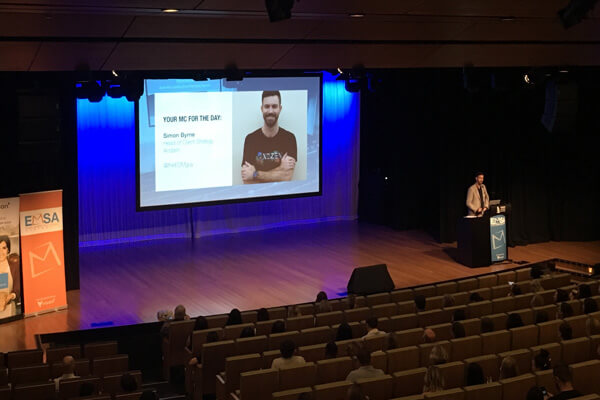This year’s 11th annual Email Marketing Summit Australia was chock-full of awesome advice and insights. Try not to fret if you missed it (but don’t make the same mistake next year!), we’ve got you covered. Here are Andzen’s top four takeaway tips.
1 – Email is one of the last distribution channel marketers still own
Dan Oshinsky, Director of Newsletters at The New Yorker (and former Director of Newsletters at Buzzfeed), opened the event with an incredibly informative talk on why investing in email is, and always will be, a top priority for digital marketers.
We often find ourselves questioning the validity of email now that we have so many other options to pick from when choosing how to best share our content – but why? Dan sagely pointed out that email, unlike other distribution channels like Facebook, Instagram or Google Search, is still entirely under your control. You own the audience. You’re the one in charge – not Zuckerberg.
As far as Dan’s concerned, the fact of the matter is simple; email marketing is a direct channel between you and your customers. There’s no one to tell you what you can and can’t say. No algorithms to rank you lower than that once-hilarious cat video that’s resurfaced from 2011. And no stresses about sudden policy changes that may render your current strategy completely useless in the blink of an eye.
With email, you’re still in control. And that’s the way it’s going to stay.
2 – It’s time to get serious about personalisation
With over 12 years of experience in almost every digital marketing field there is, when Adrian Westwood talks it’s wise to listen. This time, Adrian discussed ways marketers are better able to make customers feel like they’re the only one with personalisation techniques.
Of course, we all know how to add ‘{contact_firstname}’ into our email text to make our readers feel that little bit more special – but we often find ourselves stuck on how to up the ante from there.
Adrian laid out a few tips on how to begin:
- Start with effective data practices. Any strategy is only as good as the data you have to work with. You can’t expect to really make your customers feel loved if all you have to work with is there first name and email! You need to slowly – but surely – collect valuable, usable information on your audiences. But remember! Don’t ask for any information you don’t intend on using!
- Segment your database to suit your goals. By arranging your contacts into different classes or groups (for example hot, cold and warm leads), you can ensure you’re only sending the most relevant information to the most interested people. This means you’re far more likely to boost your open rate, and far less likely to lose subscribers.
- Use data to personalise automation. With the right data, you can make your e-marketing automations do just about anything! By linking your ecommerce software, CRM system or other treasure troves of data to your e-marketing software – you’re able to produce veritable magic.
3 – Responsive design is no longer as important as we think
For all those designers out there – take note! Responsive design isn’t nearly as important as it was back in 2014.
This was one of the truths Sidney Lien had to share in his talk on User Experience: responsive design is no longer top dog when it comes to creating great email.
The thing is, the smartphones we use are getting bigger. Their screens are becoming increasingly sharp. We’re all walking around with a 7-inch aluminium rectangle with more computing power than the Apollo 11 in our pocket. It’s simply no longer necessary to completely reorder the entire contents of an email to fit.
With so much email being read on mobile devices these days, it’s time for designers to focus their efforts on other, better ways of maximising the user experience.
4 – Use emotion!
Ella Barba, Email and Editorial Specialist at Lululemon, is a whizz when it comes to compelling copywriting. Her talk on ‘Injecting Emotion into your Email Campaigns’ was full of amazing insights on how and why passion matters in marketing.
If we really want to connect with customers, we need to inspire them. And that means lighting up the areas in the brain that love, laugh and fear – not just the analytical left-brain that worries about the pricetag.
Ella suggested putting more focus on the stories our brands are telling, rather than just the product we’re selling. By using narrative and emotion in our marketing materials, we make our brands far more memorable, and ergo, our customers more loyal.

